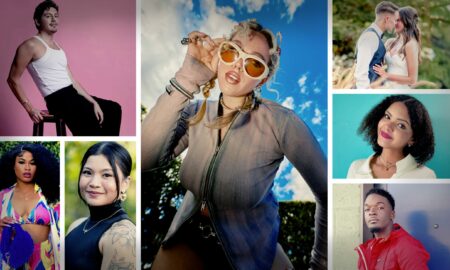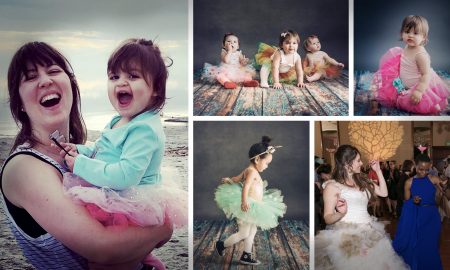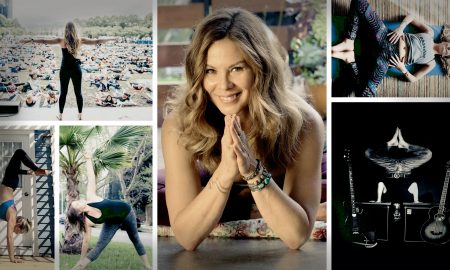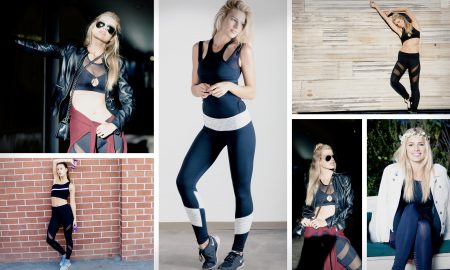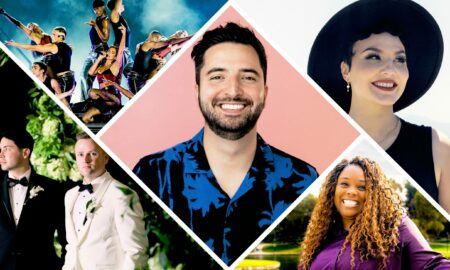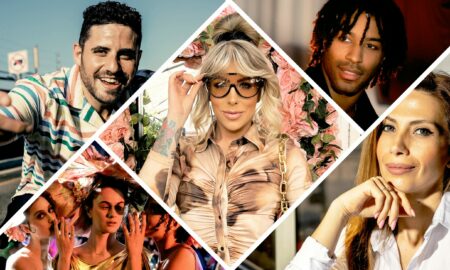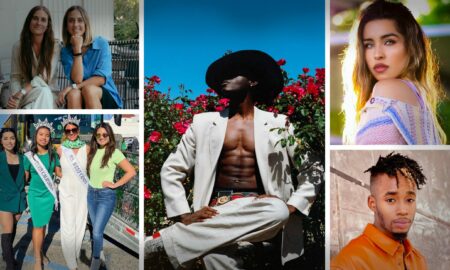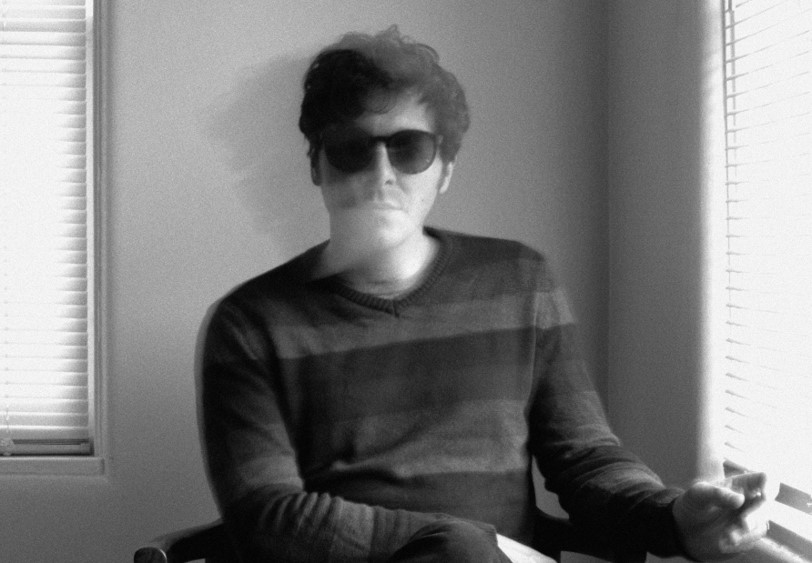

Today we’d like to introduce you to Daniel Watkins.
So, before we jump into specific questions about the business, why don’t you give us some details about you and your story.
So, the first part, “how I started.” I started in Florida in a town called Sanford, about 30 minutes outside of Orlando. I also lived further north for a bit in Osteen when I was 14 with my mom and brother in a 500 sqft. cabin with no running water or electricity.
My path to art making was fairly institutional because that’s all I really knew. I was taught that when you graduate high school, you go to college and then you get a job. And I was like “well, I want to make films. I should go to film school.” However, I grew up fairly poor, so I experienced that moment that a lot of poor children face when the specter of collage begins to take form, that is provided that they have been granted the simple luxury of going to college, is that you come up against a, if you’ll grant me a tired metaphor, a crossroads where you must decide “do I pursue a practical degree that will provide me with a clear roadmap to a lucrative career perhaps breaking the cycle of poverty, or do I pursue a degree in an amorphous void with no job security or defined path to monetization.” I chose the latter, but it was not without reservation. So I moved to, what I embarrassingly referred to at the time as “the big city” Orlando, and enrolled at University there.
I learned pretty early on in my film education that I was more interested in approaching the medium from a fine art perspective and less a commercial one. It’s a realization that was immensely satisfying on a personal artistic level and absolute suicide from a career perspective. Far as we have come, I still feel we are several decades away from broadcasting experimental film on television. That is unless you count opening credit sequences and advertising. It’s been my joke for a while that advertising is just experimental film ten years later.
Anyways, from there, I continued my institutionalization by going to grad school, this time, however, for fine art. This is what brought me to Los Angeles. During this period I made no films, but instead built kinetic, tech-sculptures, and started an experimental music duo called Chestnut with my then girlfriend-now wife.
Getting outside of what I considered at the time to be my primary medium, that being film was more or less how I got my start. I spread out all of my seemingly disparate interests and attempted to find a common thread. By codifying these according to a universal through-line, I was able to cultivate a more holistic art practice as opposed to a “film career.”
The second part, “how I got to where I am today” is a bit more tricky. It implies a sort of contentment with the space I currently occupy, but I will say this. Throughout my time in college, both as an undergrad and then as a graduate student, I held down a full-time job. This was an incredible strain on my body, but because of it, I developed an unflappable work ethic – in addition to a severe eye twitch. The way I was forced to budget my time made me approach art making as a job. Because with a job the allotment of time devoted to it is necessary, not optional.
We’re always bombarded by how great it is to pursue your passion, etc – but we’ve spoken with enough people to know that it’s not always easy. Overall, would you say things have been easy for you?
I can’t begin to imagine the arrogance of the person who says, “actually yes, it has been a completely smooth road.” It’s an enviable position, but alas and predictably, no, it has been a rather fraught road indeed.
I don’t intend to complain. Just explain. It has been fraught due in large part to the types of work I have pursued. Beauty is, of course, subjective, but there are a set of established frames that have been proven to be economically viable, and thus appealing to the gatekeepers. Things like three act structure, two and a half minute pop songs, three-point lighting. It is difficult to sell a person on something that is from a formal perspective, wholly foreign to anything that could serve as easy reference. In a pitch, they say it is always to your benefit to form analogies to help clarify your vision to the people to whom you are pitching. Now, I may be working in an experimental medium with a one-hundred-year-old tradition, but anything analogous to that work is well beyond our pop-cultural field of view, and thus any analogy I make has a better than average chance of landing with a thud. It’s tough to explain your work without an easy shorthand.
Also, and these are obstacles completely of my own making, I have a difficult time making work without first establishing a strict conceptual framework to inform it. I told myself that if I am making experimental work, then there needs to be an actual experiment taking place. I’ve never been able to work off of pure instinct because I feel to do so would be to only be doing half the work. This, however, creates an even greater barrier of entry when it comes to appreciation of your work. This has been a huge internal struggle for me. Wanting to give, but then wanting the viewer to do a little work as well.
So, it’s been an uphill battle simply to explain the work, let alone all of the other barriers that must be thwarted on the path to validation.
And none of this even broaches the economic impediments that plague most artists. As an image making and consuming society, we have been creeping closer and closer to a new epoch in resolution fetishism, similar to what happened in the 1950s and 60s with the advent of things like Cinemascope. If 8K cameras become the standard for professional image-making, then it becomes increasingly difficult for independent artists to compete. This further propagates the myth that those with access to these tools must be working at a higher level, and are therefore producing work that is of an all-around higher quality. The myth goes on to suggest that if you just work hard enough, you may one day join the rarified few who are permitted to shape culture on a grand scale. My goal is less to dispel this myth than it has been to simply not concern myself with it at all. This is why I’ve worked hard to develop an aesthetic around lo-fi, low-cost technology. It has all been an attempt to get at a new cinematic language that positions itself in direct opposition to the dead language of our mainstream national cinema.
All of these things are pretty hard sells, and I knew that they would be. The idea that it might be possible is what keeps it fun for me.
We’d love to hear more about your work and what you are currently focused on. What else should we know?
I’ve been identifying as an audio/visual artist which, I know, casts a pretty wide net. That is by design. My practice has extended from film, to sound art, to music, to sculpture, to iPhone applications. This is a way for me to remain engaged and not suffer from the inevitable burnout that working in one medium can lead to for me.
A more specific way to talk about what I do would be to discuss what I am currently working on, and where my current obsessions lie.
I’ve been long fixated on this idea of crypto-geography. Specifically, the “geography of the missing,” which is an invisible geography that sits right atop our own. The innocuous strip malls and bus stops take on a far more sinister when their histories are brought to light. A couple of years ago, I taught myself to code and built an iPhone app that tracks the user’s proximity to these abduction sites. The goal of the project was to create this understanding that we are forever standing in the intersection of multiple histories. Film works very much the same way. In any given scene there is the action within the frame, there is the real-life history of the actual event being depicted, if you use music then that piece of music comes with its own history, there is this history of the capture technology itself – and all of this comes together to create a new and perhaps unintended meaning through intertextuality. In my opinion, the most successful films are the ones that can speak to that meaning. Every object you bring into your work comes with its own baggage. This is good to keep in mind.
I just completed a VHS landscape film about the hillside stranglers called “Cursed Objects.”
My wife and I just released a new Chestnut album called “Ritual Abuse” on April 26th.
On June 22nd, I will be premiering a four channel audio/video performance called Last Known Whereabouts, sort of a continuation of the “geography of the missing” project I spoke of earlier. That will feature 360-degree perspectives of a series of abduction sites accompanied by mix of field recordings taken from those sites with some ambient embellishment.
And late last year, I finished my first narrative feature “Sometimes Our Friends Come Over (and sometimes we’re all alone).” That project for me is kind of an outlier in my body of work. The actors and I worked with a lot of improvisation and as such, I had to remove my own will and ego from the creative process. I love the result because it felt like a true collaboration.
I guess I feel it is very difficult for an artist to just be one thing these days.
Has luck played a meaningful role in your life and business?
Yikes. The concept of luck is a bit hard for me to reckon with. If things go poorly for me, I tend to turn the blame internally, and if they go, well, I assume it is because I worked for it. Now that is not say that I haven’t benefitted from privilege. I certainly have. Even if I can’t pinpoint a specific instance, it’s hard to believe that I being male-bodied, and white, have not been on the receiving end of some undeserved merit simply by virtue of the way I was born. Labeling that as luck is a very unsavory idea to me. There is something about the idea of luck, good or bad, that abdicates the receiver of any responsibility for the outcome. That’s simply not my jam. If you are benefitting from privilege, it is your responsibility to, at the very least, acknowledge that.
It goes back to what we were talking about before with intersections. The proudest moment of my career thus far was the first time I was able to buy myself dinner with the money I made from art. Being able to translate creative labor into tangible commodities was such a far-flung concept to me that the first time it happened, I cried. Looking back on it though, I think about all the histories that had to intersect for me to receive that small validation. Some good, some insidious, and some downright awful. We tend to mislabel these intersections as luck, or fate, but that implies the idea of a sympathetic universe. I’m not into that idea.
Pricing:
- Ritual Abuse by Chestnut $6.66
Contact Info:
- Website: www.NoiseAndArt.com
- Phone: 661-857-5993
- Email: [email protected]
- Instagram: @d.anielwaaa






 Image Credit:
Image Credit:
Personal image: Christina Santa Cruz, Chestnut image (the one of me with a red guitar): Beth Ashby Hyatt
Getting in touch: VoyageLA is built on recommendations from the community; it’s how we uncover hidden gems, so if you know someone who deserves recognition please let us know here.

